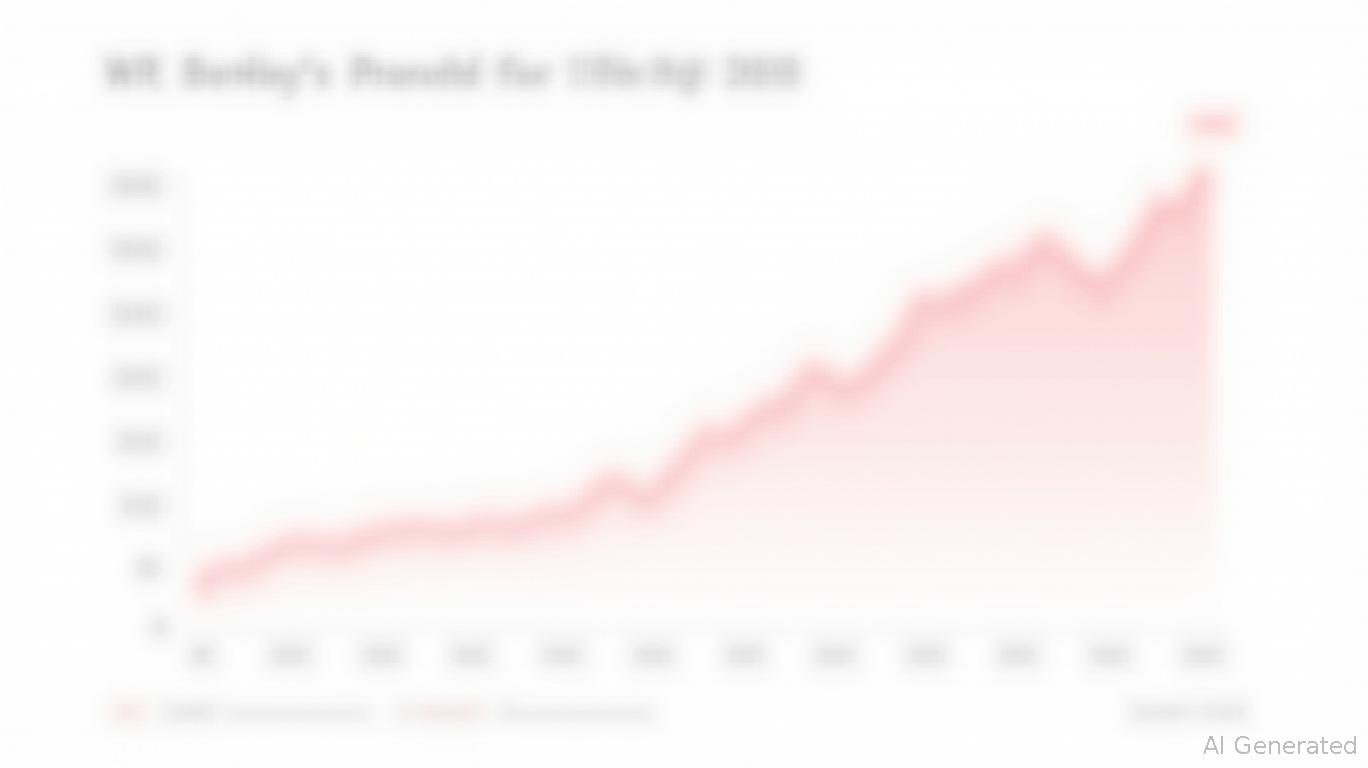The Dividend Dynamo: W.R. Berkley's Strategic Allocation and Shareholder Value Creation
W.R.
(NYSE: WRB) has long been a standout in the insurance sector, not just for its underwriting prowess but for its relentless focus on returning capital to shareholders. Over the past five years, the company has combined disciplined underwriting with a generous dividend policy—regular hikes and surprise special payouts—to create a compelling income proposition. Let's dissect how WRB's strategy has translated into shareholder value and whether it's worth your investment dollars.
The Dividend Discipline: A Steady Stream of Cash
Since 2020, W.R. Berkley has paid 18 special dividends, averaging $0.50 per share but spiking to $1.00 in 2023. These special payouts are not arbitrary; they reflect the company's ability to generate excess capital during strong underwriting cycles. For example, the $1.00 special dividend in September 30, 2023, was fueled by record net premiums and a robust investment portfolio.
Regular dividends have also grown steadily, with a 12.5% increase in 2025 to an annualized $0.36 per share. This consistency, alongside special dividends, has created a total yield of ~0.6% annually, which may seem modest but is amplified by the surprise boosts. A 2023 special dividend briefly pushed the yield to 6.2%, rewarding investors who held through volatile markets.
Capital Allocation Excellence: Where the Money Goes
WRB's capital allocation strategy is a masterclass in balance. Let's break it down:
1. Underwriting: The Engine of Growth
- Premiums: Net premiums written hit $11.97 billion in 2024, a 9.3% rise from 2023, driven by rate hikes (up to 8.3% in Q1 2025) in casualty and professional liability lines.
- Risk Management: The company maintains a combined ratio below 90%, a testament to its disciplined approach. Even with $297.6 million in 2024 catastrophe losses, WRB's underwriting remains profitable.
2. Share Repurchases: Buying Back Value
- $371 million spent on buybacks in 2024–2025, leveraging record operating cash flows of $3.7 billion in 2024.
- Book Value Growth: Shareholders benefit directly, as book value per share rose 23.5% in 2024 to $23.50, excluding dividends and repurchases.
3. Dividends vs. Growth: A Winning Mix
The company prioritizes returns but reinvests prudently. For instance, $1.3 billion in investment income in 2024 (up 26.6%) funds both dividends and organic growth in high-margin segments like professional liability.
Risks on the Horizon
No strategy is without risks. Catastrophe exposure remains a wildcard, with Q1 2025 losses at $111.1 million. Rising interest rates could also pressure fixed-income portfolios, though WRB's 2024 investment income rose due to higher rates.
The Investment Case: Buy, Hold, or Wait?
The numbers argue for a buy-and-hold strategy:
- Dividend Sustainability: A dividend cover ratio of 2.0 (earnings vs. payouts) ensures safety.
- Long-Term Returns: A 2020–2025 dividend-based strategy yielded 186.61% total return, outpacing the S&P 500.
- Valuation: At current prices, WRB trades at 1.3x book value, a discount to its historical average and peers.
Final Take
W.R. Berkley's blend of underwriting excellence, disciplined capital returns, and shareholder-friendly policies positions it as a top-tier income play. While insurance cyclicality and macro risks exist, the company's track record of turning underwriting profits into cash for investors is unmatched. For those seeking steady income with growth potential, WRB remains a buy—especially as it enters its 2025 dividend cycle with a $0.50 special payout and a higher regular dividend.
Investor takeaway: Consider a position in WRB for its reliable dividends and capital efficiency, but keep an eye on catastrophe exposures and interest rate trends.

Comments
No comments yet